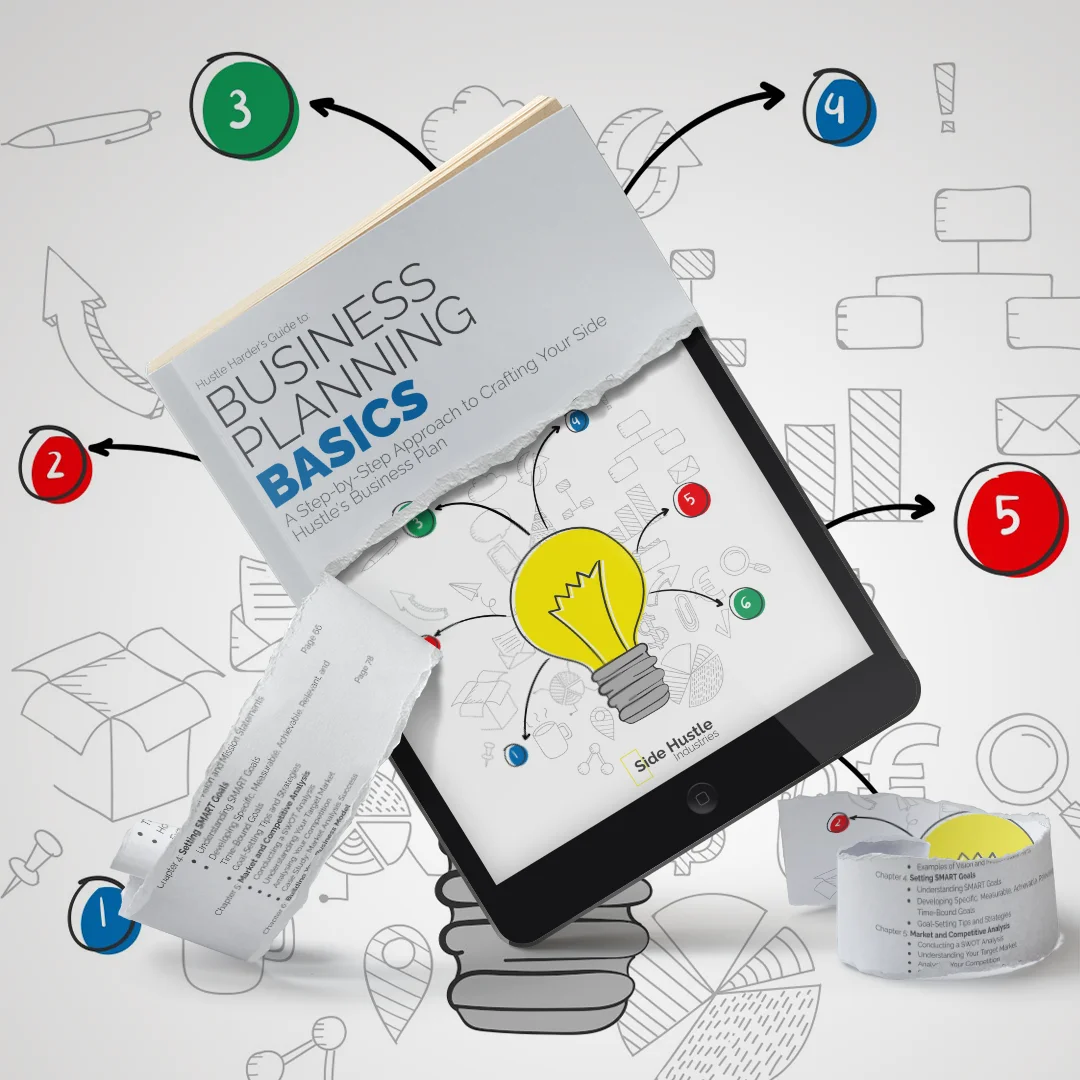
In the realm of entrepreneurship, one size doesn’t fit all. The business model you choose should align with your goals, target market, resources, and the specific challenges and opportunities in your industry. This article explores different business models to help you select the one that best suits your side hustle or startup.

The Importance of Choosing the Right Business Model
Your business model is essentially the blueprint that outlines how your business creates, delivers, and captures value. It’s not just about making money; it’s about how you create a sustainable and profitable venture. Here’s why choosing the right business model is crucial:
- Alignment with Goals: Your business model should align with your entrepreneurial goals. Whether you’re looking for rapid growth, steady income, or lifestyle flexibility, your business model can either support or hinder your objectives.
- Resource Efficiency: Different business models have varying resource requirements. Choosing the right model ensures efficient use of your time, money, and other resources.
- Market Fit: Your business model should resonate with your target market’s preferences and behaviours. It’s about delivering what your customers want in a way that meets their needs.
- Scalability: Some business models are easier to scale than others. If your ambition is to grow your business significantly, your chosen model should support this scalability.
- Competitive Advantage: A well-suited business model can set you apart from competitors. It can be a source of differentiation and customer loyalty.
Now, let’s explore different business models to help you make an informed choice:
1. E-commerce Model
- What It Is: E-commerce involves selling products or services online. This model can range from a single-person operation selling handmade crafts on Etsy to a multinational corporation like Amazon.
- Why It Works: The e-commerce model is popular due to its scalability, global reach, and relatively low overhead costs. It’s a great fit for those who want to tap into the vast online market.
Examples: Amazon, eBay, Etsy, Shopify stores, and online marketplaces.
2. Subscription Model
- What It Is: In this model, customers pay a regular fee to access a service or receive products on an ongoing basis. Subscriptions can include software, entertainment, meal kits, and more.
- Why It Works: Subscription models offer recurring revenue, which provides financial stability. They are excellent for building a loyal customer base.
Examples: Netflix, Spotify, Blue Apron, and subscription boxes like Birchbox.
3. Freemium Model
- What It Is: The freemium model offers a basic version of a product or service for free and charges for premium features or content. It’s commonly used in software, apps, and online platforms.
- Why It Works: Freemium models attract a wide user base with a free offering and convert a portion of them into paying customers. It’s a great strategy for customer acquisition.
Examples: Dropbox, Evernote, LinkedIn, and many mobile games.
4. Marketplace Model
- What It Is: Marketplaces connect buyers and sellers, taking a commission or fee for facilitating transactions. This model has grown in prominence due to its role in the gig economy.
- Why It Works: Marketplaces leverage the network effect, where more users attract more buyers and sellers. They often require lower capital investment compared to owning inventory.
Examples: Airbnb, Uber, eBay, and Upwork.
5. Brick-and-Mortar Model
- What It Is: Brick-and-mortar businesses operate physical stores or offices where customers visit to buy products or receive services. This traditional model has evolved with technology integration.
- Why It Works: Physical presence allows for in-person interactions and immediate customer gratification. It’s often essential for industries like retail and healthcare.
Examples: Starbucks, Walmart, local boutiques, and dental clinics.
6. Franchise Model
- What It Is: Franchising allows individuals to operate a business using the branding, products, and processes of an established brand in exchange for fees and royalties. It’s a way to replicate a successful business model.
- Why It Works: Franchising provides entrepreneurs with a proven system, established brand recognition, and ongoing support. It’s a pathway to entrepreneurship with reduced risk.
Examples: McDonald’s, Subway, and The UPS Store.
7. Direct Sales Model
- What It Is: Direct sales involve selling products or services directly to consumers through personal relationships, often in a face-to-face manner. It’s commonly associated with network marketing and multi-level marketing (MLM) companies.
- Why It Works: This model leverages personal relationships and word-of-mouth marketing. It’s attractive for those who want to earn commissions based on their sales and those of their recruits.
Examples: Amway, Avon, and Tupperware.
8. Affiliate Marketing Model
- What It Is: Affiliate marketing involves promoting products or services of other companies and earning a commission for each sale or lead generated through your marketing efforts.
- Why It Works: This model is cost-effective for businesses, as they pay only for actual sales or leads. It’s appealing for affiliates looking to monetize their online presence.
Examples: Amazon Associates, ShareASale, and ClickBank.
9. Agency Model
- What It Is: Agencies offer specialised services to clients, such as marketing, advertising, design, or consulting. They work on behalf of clients to achieve specific goals.
- Why It Works: Agencies provide expertise and resources that clients may lack in-house. This model is suitable for professionals looking to leverage their skills.
Examples: Ad agencies, digital marketing agencies, and design studios.
10. Manufacturing Model
- What It Is: Manufacturing businesses produce physical products, often in bulk, to sell to wholesalers, retailers, or consumers. It’s a classic model for creating tangible goods.
- Why It Works: This model is suitable for those with a passion for creating physical products. It allows you to control the entire production process.
Examples: Apple, Ford, and local craft breweries.
11. Service Model
- What It Is: Service businesses offer specialised skills, knowledge, or labour to clients. This model covers a wide range of services, from consulting to cleaning.
- Why It Works: Services can be highly profitable, with lower overhead costs than physical products. It’s appealing for those with expertise in a particular field.
Examples: Legal firms, freelance writers, plumbing services, and consulting agencies.

Selecting the Right Business Model
Choosing the right business model is a pivotal decision in your entrepreneurial journey. To make an informed choice, consider the following factors:
- Your Passion and Skills: Your business model should align with what you’re passionate about and what you’re good at. This will keep you motivated and enhance your chances of success.
- Target Market: Understand the preferences, behaviours, and needs of your target market. The chosen model should cater to their expectations.
- Resources: Assess your available resources, including time, money, and expertise. Some models require more capital or technical skills than others.
- Competition: Analyse the competitive landscape in your industry. Identify gaps or areas where your model can provide a unique value proposition.
- Scalability: Consider your growth goals. Some models are more scalable than others. If you aim for rapid expansion, opt for a model that accommodates growth.
- Market Trends: Stay attuned to market trends and consumer behaviour. Be flexible and willing to adapt your model as needed.
- Legal and Regulatory Considerations: Certain business models may have specific legal and regulatory requirements. Ensure you comply with these.
Your business model is not set in stone. It can evolve as your business grows and as you gain a deeper understanding of your market and customer needs. In the end, the best business model is the one that allows you to create value, serve your customers, and achieve your entrepreneurial goals.

*Also available on Amazon in Kindle, Soft Cover & Hard Cover formats. —> Click Here.
